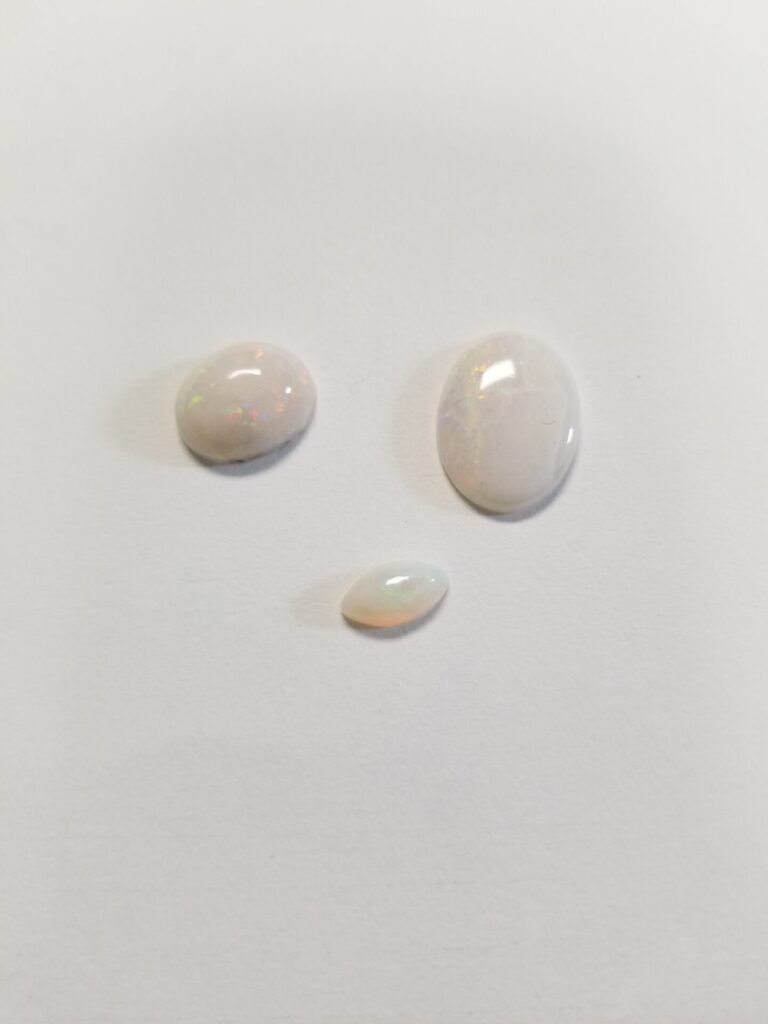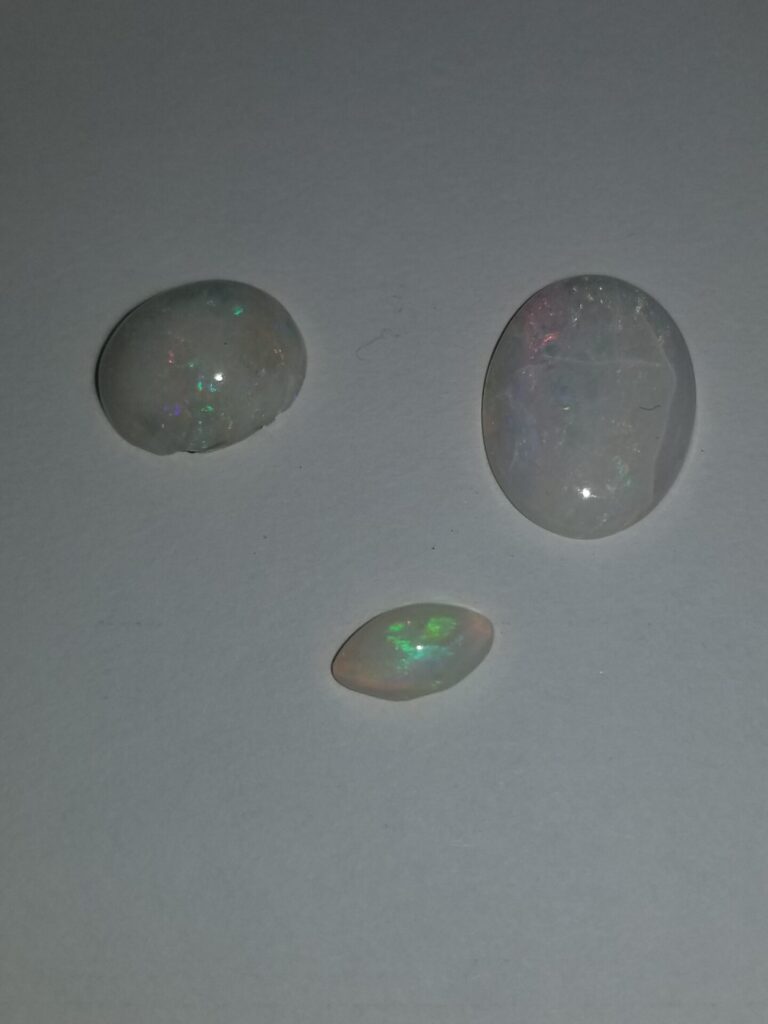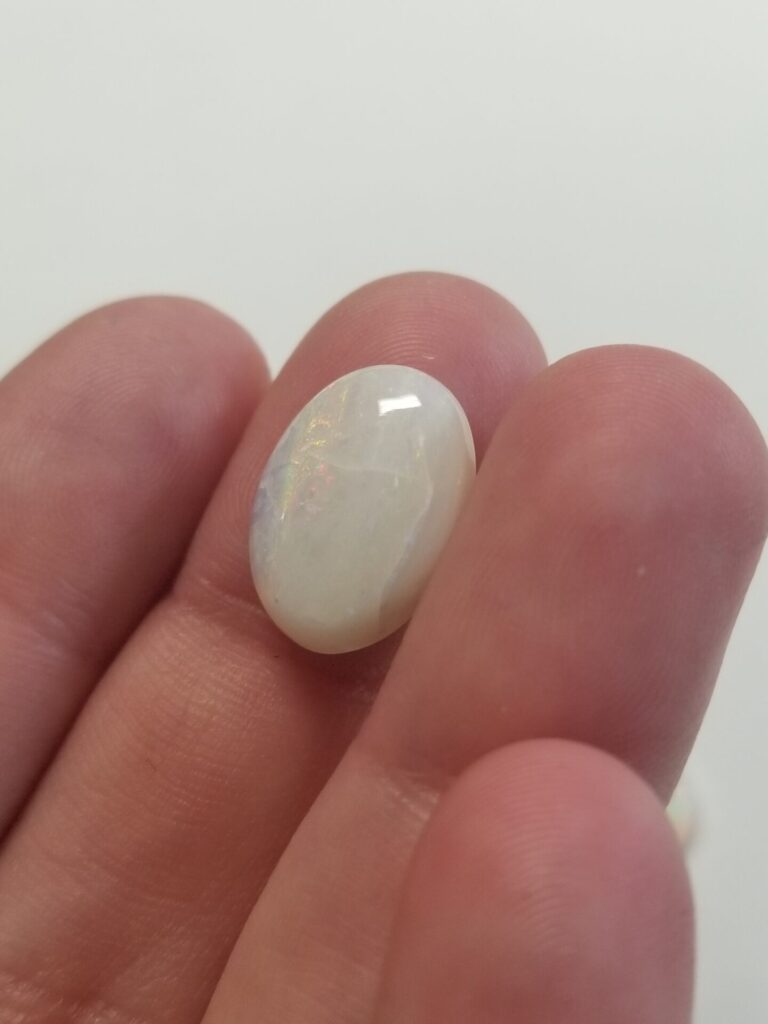October is a special month, because it has two distinct birthstones: opal, and tourmaline. In this post, we’ll talk about opals, and share their distinctive features.
Many cultures believed that opal had supernatural origins and powers. In Arabic culture, it was believed to fall from heaven in flashes of lightning. The Greek people thought it gave the gift of prophesy and guarded from disease.
You may have heard opal is unlucky unless it’s your birthstone. A novel from the 1800s by Sir Walter Scott, Anne of Geierstein, is the reason for this belief! Throughout history, opal was regarded as a very lucky gem, until this novel was published.
Opal is known for its play-of-color, which has different patterns of color that look like they’re flashing, moving across the stone, or glowing through the stone. The color of these flashes is determined by the size of the spheres in the stone’s molecular structure. Most opals are cut as cabochons to allow the play-of-color to have its full effect.
There are four main types of opal:
- White opal – translucent to semi-translucent stone with play-of-color against a light or white bodycolor.
- Black opal – translucent to opaque with play-of-color against a dark or black bodycolor.
- 3. Fire opal (other names include Mexican opal, sun opal, and gold opal) – transparent to translucent with brown, yellow, orange, or red bodycolor. Often doesn’t have play-of-color.
- Boulder opal – translucent to opaque with play-of-color against a light to dark background. These opals have host-rock fragments as part of the finished gem.
Opal has a hardness of 5 ½ to 6 on the Mohs scale, and a very poor to fair toughness. Because of this, opals aren’t recommended for daily wear, especially if they’re set in rings. They also shouldn’t be set beside harder stones, because the harder stones can scratch the opal if they’re touching.
Opals need to be stored in a location where they can get oxygen. Opals need moisture from the air, or they can discolor and crack, known as crazing.
Never use an ultrasonic cleaner on opals! The best method for cleaning them is warm, soapy water and a soft towel like microfiber.
Opals can be very difficult to photograph due to their play-of-color. So, why not come in person and see them for yourself?



